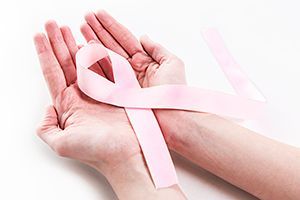People today want convenience, whether it be from their bank, credit card, favorite retail store, or restaurant. They demand it from the companies who hold their loyalty, including their health care providers (you). They don’t want to call and possibly be put on hold, and they want to use an app or schedule an appointment on your website. Here are three reasons your practice can gain by switching to online appointment scheduling.
Treatment You Can Provide for Post-Mastectomy Patients: Increasing Range of Motion (ROM) & Decreasing Pain
The American Cancer Society estimates there will be 268, 600 new cases of invasive breast cancer in the U.S. just this year.1 Many of these people will undergo a mastectomy as part of their treatment. As with almost any surgery, pain and decreased range of motion to the area affected is common during healing. For some, long-term pain from the surgery is an unwanted outcome. A 2016 study on post mastectomy pain syndrome (PMPS) suggests that 20-68 percent of post-mastectomy patients suffer with pain for months post surgery.2
PMPS, is defined as chronic pain, often neurological, that lasts more than three months after the surgical procedure. The classic symptoms of PMPS are pain and tingling in the chest wall, armpit, and/or arm. In addition to pain, mastectomy also carries a risk of decreased range of motion (ROM) that may linger for weeks, months, and even years. Needless to say, these conditions can also affect the quality of life of breast cancer patients.
How to Increase Range of Motion
Acupuncture is regularly used as an effective treatment method to address ROM and pain for orthopedic issues. The difference for people post-mastectomy or post-surgery is that the area of the problem is typically not able to be needled right after surgery as it is the site of a healing surgical wound. Also, people who have mastectomies often run the risk of lymphedema, swelling in the extremities that is most typically caused by the removal or damage to lymph nodes. Acupuncture is contraindicated in these areas.

However, Channel Theory is an excellent alternative treatment. The Channels or Jing Luo are key to the traditional theories of acupuncture. The qi, blood, ying and wei are said to travel along these channels, making a continuous flow throughout the body. A healthy flow of these nutrients is critical to a healthy body.
Dr. Tan was the well-known master of the Balance Method, an expanded form of Channel Theory. According to Dr. Tan one should first identify the 'sick' channel(s), then determine the appropriate channel(s) for treatment, and finally select the appropriate point(s) on the appropriate channel(s).3 There are many relationships between channels, i.e. yin yang paired channels (Liver/Gall Bladder), same-name channels from the upper and lower extremities (i.e. Pericardium hand jue yin/Liver foot jue yin), Chinese clock relationship (Kidney 5-7 p.m. peak/Large Intestine 5-7 a.m. peak). Thus, in Channel Theory, the key to a successful treatment is to identify the best channel relationship for the area of the problem and for the corresponding treatment site.
Common Sites of Pain
The area of pain most often report-ed by post-mastectomy patients is in the chest wall, armpit, and/or arm. Pain may also be felt in the shoulder or surgical scar. In Chinese Medicine Channel terms, this region most commonly corresponds to the Stomach and Pericardium channels. The most common ROM affected that I see in practice is the straight arm raise. With the Stomach and Pericardium channels of the breast most affected, I find the best corresponding treatment channels are found on the contralateral leg. From a Channel Theory view, the Spleen channel, as the Yin-Yang pair of the Stomach, and the Liver channel, as the Jue-Yin pair for Pericardium, are used most often.
Points, Palpation, and Needling
Selection of points is done based on palpation of the treatment channel(s) as well as patient feedback. Before beginning point selection, have the patient move her arm slowly in the direction that causes pain. Ask her to let you know when she first feels the pain. Note the ROM of the arm when the pain begins. Also, ask the patient to rate the pain level. Then have the patient return her arm to a neutral position. Be sure the patient stops the movement before the pain is too intense, so as not to cause injury.
Now begin palpation along the Spleen and Liver channels to reveal areas that are knotty, tight, ropey, etc. Also, ask the patient to report if any of the palpated spots are painful. Needle these points to where de qi is achieved. The number of needles used depends upon the patient but a typical number is 4-10.
After the points have been needled, ask the patient to move her arm again in the same direction as earlier and have her stop when she first notices pain. You will likely notice an increase in ROM and/or decrease in the level of pain. Sometimes the pain level stays the same but the ROM has increased although there are times when the ROM increases and the pain level decreases.
If there has been little change, stimulate the needles and check for more ah-shi points on the leg. Then recheck the ROM and pain level. Once you've gotten some change, retain the needles for 15-20 minutes. Recheck ROM and pain levels before removing needles. To continue the treatment, place presstacks at the sites of the needles or ah-shi points. Patients vary in their response time depending on constitution, length of time the problem has been present, whether patient is still in treatment and whether there are other underlying TCM diagnoses.
In my experience patients start to get results within 1-3 treatments. If the patient doesn't get immediate results, i.e. the ROM doesn't change, reconsider the channel relationship(s). Each person and each body is different, as we know in our medicine, so we have to be prepared to use all of our understanding of Channel Relationships when treating pain and ROM in post-mastectomy patients.
References
- About Breast Cancer. How Common is Breast Cancer? American Cancer Society, 2019.
- Beyaz SG, Ergonenc JS, Ergonenc T, et al. Postmastectomy Pain: A Cross-sectional Study of Prevalence, Pain Characteristics, and Effects on Quality of Life. Chinese Medicine Journal, 2016; 129(1): 66–71.
- Shrubbs J. Conflicting nationalisms: The foundations of channel theory. J Chinese Med, 2012; 100(1): 53.



